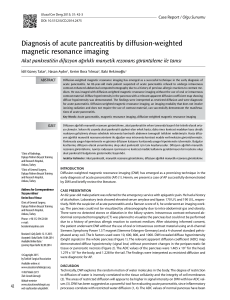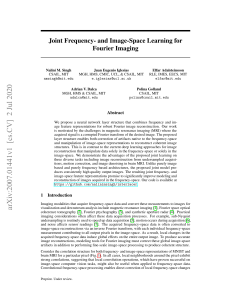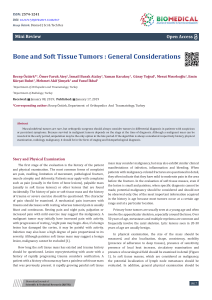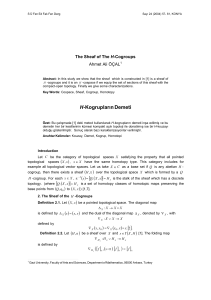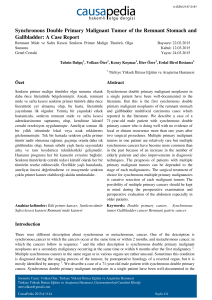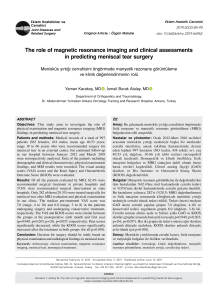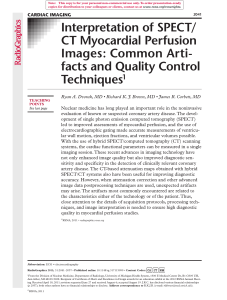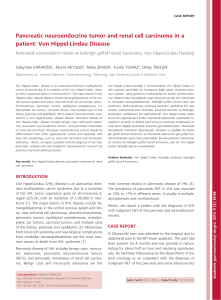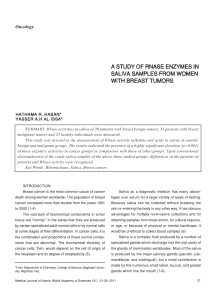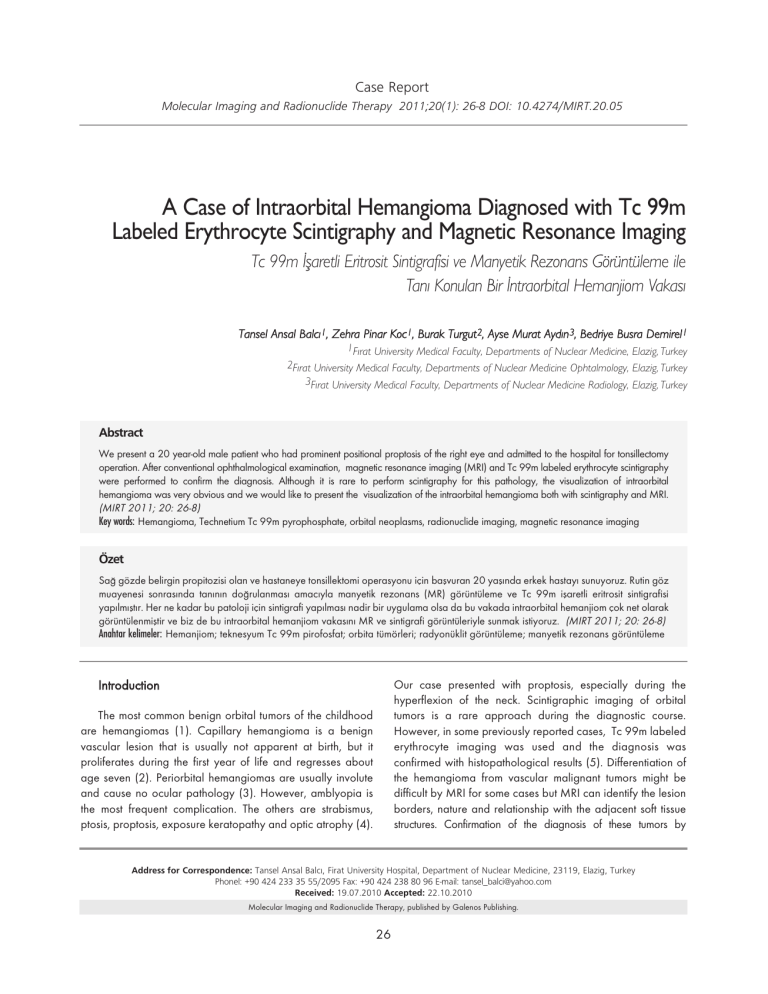
Case Report
Molecular Imaging and Radionuclide Therapy 2011;20(1): 26-8 DOI: 10.4274/MIRT.20.05
A Case of Intraorbital Hemangioma Diagnosed with Tc 99m
Labeled Erythrocyte Scintigraphy and Magnetic Resonance Imaging
Tc 99m ‹flaretli Eritrosit Sintigrafisi ve Manyetik Rezonans Görüntüleme ile
Tan› Konulan Bir ‹ntraorbital Hemanjiom Vakas›
Tansel Ansal Balc›1, Zehra Pinar Koc1, Burak Turgut2, Ayse Murat Ayd›n3, Bedriye Busra Demirel1
1F›rat University Medical Faculty, Departments of Nuclear Medicine, Elazig, Turkey
2F›rat University Medical Faculty, Departments of Nuclear Medicine Ophtalmology, Elazig, Turkey
3F›rat University Medical Faculty, Departments of Nuclear Medicine Radiology, Elazig, Turkey
Abstract
We present a 20 year-old male patient who had prominent positional proptosis of the right eye and admitted to the hospital for tonsillectomy
operation. After conventional ophthalmological examination, magnetic resonance imaging (MRI) and Tc 99m labeled erythrocyte scintigraphy
were performed to confirm the diagnosis. Although it is rare to perform scintigraphy for this pathology, the visualization of intraorbital
hemangioma was very obvious and we would like to present the visualization of the intraorbital hemangioma both with scintigraphy and MRI.
(MIRT 2011; 20: 26-8)
Key words: Hemangioma, Technetium Tc 99m pyrophosphate, orbital neoplasms, radionuclide imaging, magnetic resonance imaging
Özet
Sa¤ gözde belirgin propitozisi olan ve hastaneye tonsillektomi operasyonu için baflvuran 20 yafl›nda erkek hastay› sunuyoruz. Rutin göz
muayenesi sonras›nda tan›n›n do¤rulanmas› amac›yla manyetik rezonans (MR) görüntüleme ve Tc 99m iflaretli eritrosit sintigrafisi
yap›lm›flt›r. Her ne kadar bu patoloji için sintigrafi yap›lmas› nadir bir uygulama olsa da bu vakada intraorbital hemanjiom çok net olarak
görüntülenmifltir ve biz de bu intraorbital hemanjiom vakas›n› MR ve sintigrafi görüntüleriyle sunmak istiyoruz. (MIRT 2011; 20: 26-8)
Anahtar kelimeler: Hemanjiom; teknesyum Tc 99m pirofosfat; orbita tümörleri; radyonüklit görüntüleme; manyetik rezonans görüntüleme
Our case presented with proptosis, especially during the
hyperflexion of the neck. Scintigraphic imaging of orbital
tumors is a rare approach during the diagnostic course.
However, in some previously reported cases, Tc 99m labeled
erythrocyte imaging was used and the diagnosis was
confirmed with histopathological results (5). Differentiation of
the hemangioma from vascular malignant tumors might be
difficult by MRI for some cases but MRI can identify the lesion
borders, nature and relationship with the adjacent soft tissue
structures. Confirmation of the diagnosis of these tumors by
Introduction
The most common benign orbital tumors of the childhood
are hemangiomas (1). Capillary hemangioma is a benign
vascular lesion that is usually not apparent at birth, but it
proliferates during the first year of life and regresses about
age seven (2). Periorbital hemangiomas are usually involute
and cause no ocular pathology (3). However, amblyopia is
the most frequent complication. The others are strabismus,
ptosis, proptosis, exposure keratopathy and optic atrophy (4).
Address for Correspondence: Tansel Ansal Balc›, Firat University Hospital, Department of Nuclear Medicine, 23119, Elazig, Turkey
Phonel: +90 424 233 35 55/2095 Fax: +90 424 238 80 96 E-mail: [email protected]
Received: 19.07.2010 Accepted: 22.10.2010
Molecular Imaging and Radionuclide Therapy, published by Galenos Publishing.
26
Balc› et al. RBC scintigraphy and MRI in Intraorbital Hemangioma
Tc 99m labeled erythrocyte imaging which clearly demonstrates
hepatic hemangiomas, will be better if the MRI results are suspicious.
We present an intraorbital hemangioma case imaged with Tc 99m
labeled erythrocyte scintigraphy and MRI.
performed, significant proptosis was visually observed on his right
eye during the hyperflexion position. Hertel exophthalmometry
on primary position measured 11.6 mm and 11.2 mm for the
right and left eye, respectively. Eye movements were intact.
Slit-lamp biomicroscopy and fundus examination did not show
any pathological findings. There is no family history. MRI (Figure
1) showed minimal exophthalmus and the lesion which is 3x3 cm
in size. The lesion at the right intraconal localization and causing
minimal depletion of the superior rectus muscle showed lobulated
borders with signal void areas, isointense on T1-weighted and
hyperintense on T2-weighted images. After intravenous contrast
injection; the lesion showed intense contrast enhancement.
We performed in vivo labeled Tc 99m erythrocyte
scintigraphy. Dynamic images showed no vascularisation, and
there was slightly increased activity on the early blood-pool
images (Figure 2a). Delayed phase planar and SPECT images
showed intense tracer accumulation on the lesion localization
(Figure 2b, 2c). This typical scintigraphic pattern is known as
“perfusion-blood pool mismatch”.
Case Report
A right sided proptosis in a 20 year-old male patient who
underwent tonsillectomy operation was evaluated. He declared
that this pathology had existed since his childhood.
Ophthalmological examination, MRI and labeled erythrocyte
scintigraphy were performed. On ophthalmological
examination, mild exophthalmus was present during the
hyperflexion of the neck. Visual acuities were 20/20 on both
eyes. Although Hertel exophthalmometry could not be
Discussion
The diagnostic test of choice is MRI for intraorbital
hemangioma (6) which is characterized by indefinite borders
usually penetrating into adjacent tissues. The diagnostic
hallmark of the image is numerous vascular structure content
of the lesion (7). Tc 99m labeled erythrocyte imaging for
hemangioma is usually used for the diagnosis of liver
hemangiomas. Although there is a significant physiological
background tracer accumulation, diagnostic performance of
this method for liver lesions is very precise. This technique can
also easily demonstrate this kind of tumors even if they are in
unusual localization as there is little background activity.
Radioactivity accumulation within the lesion of our patient was
Figure 1. Coronal (T1-w contrast, T2 w/out contrast), axial (T1 and
T2), and sagittal (T1 and T2) slices of MRI
a
c
b
Figure 2. Dynamic (serial images on the first rows of 2a), early blood-pool (bottom image of 2a), late phase planar (2b) images on the anterior projection
and SPECT (2c-transaxial, sagittal and coronal slices, respectively) images of Tc 99m labeled erythrocyte scintigraphy
27
Balc› et al. RBC scintigraphy and MRI in Intraorbital Hemangioma
3. Ooi KGJ, Wenderoth JD, Francis IC, Wilcsek GA. Selective
embolization and resection of a large noninvoluting congenital
hemangioma of the lower eyelid. Ophthal Plast Reconstr Surg
2009;25:111-114.
4. Haik BG, Jakobiec FA, Ellsworth RM, Jones IS. Capillary hemangioma
of the lids and orbit: an analysis of the clinical features and therapeutic
results in 101 cases. Ophthalmology 1979;86:760-792.
5 Polito E, Burroni L, Pichierri P, Loffredo A, Vattimo AG. Technetium
99m-labeled red blood cells in the preoperative diagnosis of
cavernous hemangioma and other vascular orbital tumors. Arch
Ophthalmol 2005;123:1678-1683.
6 Kavanagh EC, Heran MKS, Peleg A, Rootman J. Imaging of the
natural history of an orbital capillary hemangioma. Orbit 2006;25:69-72.
7 Sayit E, Durak I, Capakaya G, Yilmaz M, Durak H. The role of
Tc 99m RBC scintigraphy in the differential diagnosis of orbital
cavernous hemangioma. Ann Nucl Med 2001;15:149-151.
8 Gdal-On M, Gelfand YA, Israel O. Tc 99m labeled red blood cells
scintigraphy: a diagnostic method for orbital cavernous
hemangioma. Eur J Ophthalmol. 1999;9:125-129.
9 Front D, Israel O, Groshar D, Weininger J. Technetium-99m-labeled
red blood cell imaging. Semin Nucl Med 1984;14:226-250.
10 Gabdrakhmanova AF, Altynbaeva LR. The first experience in using
radionuclide by single-photon emission computed tomography in the
diagnosis of orbital neoplasms. Vestn Oftalmol 2008;124:39-41.
11 Reddy AR, Chang BYP, Bradbury JA. Is this really a capillary
haemangioma? Orbit 2007;26:327-329.
very prominent in the late phase images. The scintigraphic
pattern of the hemangioma which is hypoactive in the
vascular phase and hyperactive in the late phase, is previously
well established (8-10). In some studies, this typical
appearance of these tumors was used for the differentiation
from malignant tumors and confirmed with histopathology (5).
According to previous reports, Tc 99m labeled erythrocyte
imaging could differentiate hemangioma from malignant
tumors (5,8-10). This characteristic of Tc 99m labeled
erythrocyte scintigraphy might help to decide the choice of
treatment, i.e. surgery for the malignant lesions or follow-up for
the hemangiomas. Finally, appropriate management for
hemangiomas is to follow-up by means of clinical and
radiological findings and intralesional corticosteroid injection
10 or surgical intervention in some rare situations (11).
References
1. Henderson JW. Orbital Tumors. In: Holmes S, Hutchison I eds. 3rd
ed. New York: Raven Press; 1994. p. 89-95.
2. Hassmann-Poznanska E, Krzyna A. Hemangiomas and vascular
malformations of the head and neck. Otolaryngol Pol 2006;60:663-674.
28

